When a new swimming pool is filled with water, it’s exciting for the swimmers. However, it’s still unsafe for them to jump in because the pool is not yet finished. I know everyone is excited to jump right in but hold on.
The first step to maintaining a pool is to fill it with water, but this is not the only thing you have to do. After filling your pool with water, there are a few crucial things to do, such as sanitizing it and balancing the pH level.
To make the pool safe, you should use some pool startup chemicals. If you’ve never treated pool water before, it can seem daunting.
I have written this guide to specifically explain how to treat pool water the first time as per the CDC guidelines and the advice of various pool experts.
After that, we’ll cover what you need to do, from once the water is filled to how to test your pool once it is filled with chemicals properly.
Here’s Exactly What To Do Next
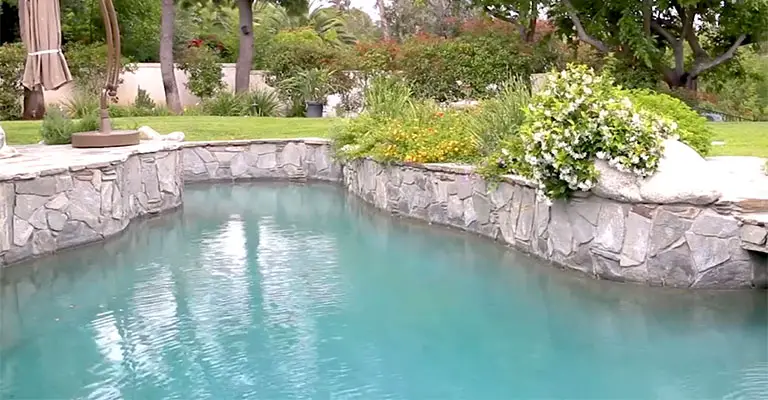
When you become a new pool owner, you might wonder how to maintain it to keep your family safe properly.
In addition, you need to take certain steps to make sure the water is ready for recreational use when filling up your pool for the first time. So, after you fill your pool with water, what do you do next?
When you fill your pool with water, make sure that you complete the following steps: Check the pH, total alkalinity, calcium hardness, and metals levels; add a sanitizer, algaecide, and clarifier to the water.
Your pool can be used for recreational purposes once you have completed the above steps.
Here’s what you need to know about testing your pool’s water and the steps you need to take after filling it. After that, you’ll have a nice, cool pool to swim in at any time, all year round.
Follow These Steps After You Have Filled Your Pool With Water
Let’s start with safety. Things can go wrong unexpectedly in all kinds of situations. One possibility is leaking, which is common. Check for leaks in the pool first. To ensure a safe backyard pool, you must:
1. Prevent Injuries By Taking The Necessary Measures
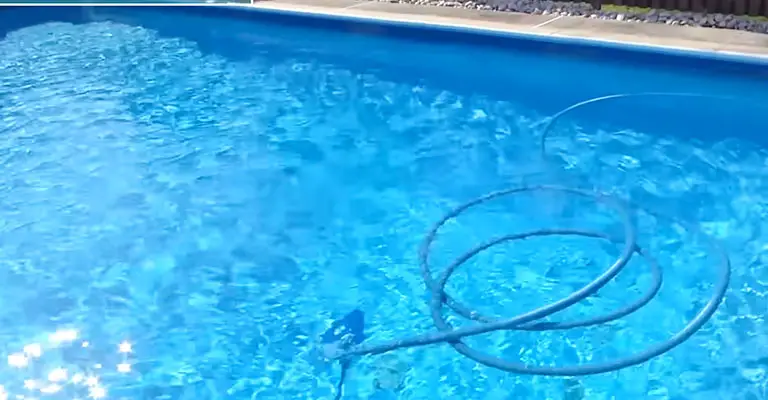
The possibility of drowning in pools exists, as do chemical injuries. Therefore, preventive measures should be taken against drownings and injuries caused by pool startup chemicals.
Not to alarm you, but drowning is among the leading causes of injury-related deaths in children. Most drownings occur in swimming pools.
Additionally, install locks and alarms around the windows and fences around the pool. Finally, do not leave your children unattended near the pool.
A chemical injury involves splashing water into the eyes and sometimes on the skin. So, you want to post aquatic safety signs in your pool, and everyone should wear safety masks or goggles.
2. Checking The pH Level
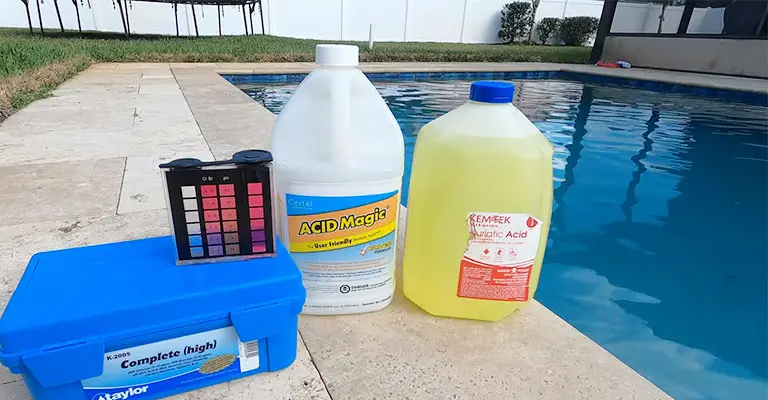
pH balance measures the acidity of the water. pH scales range from 0-14, with 0 being the most acidic and 14 being the most basic. 7.0 is the neutral pH value.
In a swimming pool, the pH range should be between 7.2 and 7.6, with 7.4 being ideal.
Your pool will be damaged by a pH of the water that is just a little bit out of whack, even if it is just a little bit off. Additionally, swimmers will experience skin and eye irritation.
Using soda ash is usually the most effective method of raising pH levels. For example, to raise 10,000 gallons of water by 0.2 pH points, experts recommend using 6 ounces.
3. Put The Filter On
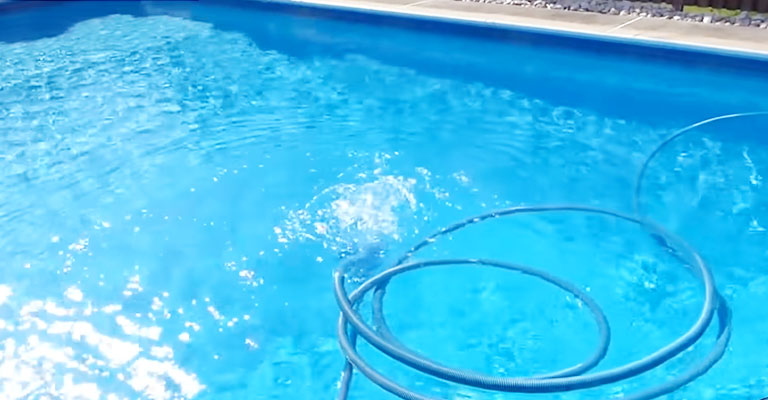
You should turn on the filter as per the instructions provided by the manufacturer once you have taken care of all safety issues.
Check the filter to make sure it is working properly. Get in touch with the manufacturer right away if it isn’t. If you don’t know what you are doing, don’t try to troubleshoot the problem yourself.
4. A Second Vacuuming Is In Order
Even though you have already cleaned your pool, debris may have entered the water after you filled it with water. The lingering debris can damage your pool liner. To remove debris from the bottom of your pool, make sure to vacuum it.
A pool skimmer can also be used to remove any floating debris from the pool. When it comes to the bottom of the pool, you can use plenty of resources to learn how to remove sediment from the bottom.
5. Overall Alkalinity
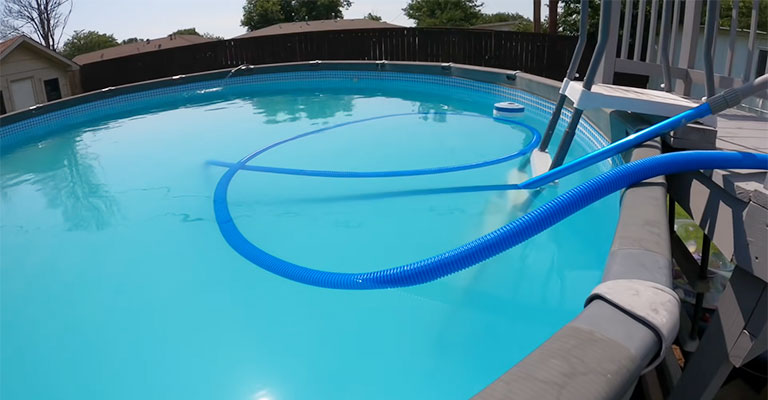
Similar to pH levels, excessively low or excessively high total alkalinity levels can negatively affect pool equipment. Between 80 and 120 ppm is the ideal level of alkalinity.
You should buy a sodium bicarbonate-containing product if you have less than 80 ppm alkalinity. Baking soda can also be used instead. If you are unsure how much of either product to use, you can use a pool volume calculator.
6. Soda Ash: How Much Do I Need?
You need to mix clean water and soda ash together in a bucket before adding them to your pool. Then, fill the edge of the pool with the mixture.
Run the pump continuously during this period so the mixture of soda ash and water will be evenly distributed.
Then, wait an hour and test the pH levels again after you’ve completed this step. Depending on the pH levels, you may need to make a few adjustments.
7. Metal Testing
By purchasing a metal test kit, you can easily check for the presence of metals in your swimming pool. There is no guarantee they will be included in the test kits mentioned at the beginning of this post.
As long as your test kit results are positive, you need to use your pool metal removal chemicals. The CuLator Powerpak is one method of eliminating chemicals.
Iron and copper are absorbed in this product within a 30-day period at a rate of up to 4% ppm and fit into your pool’s pump basket.
8. Hardness Of Calcium
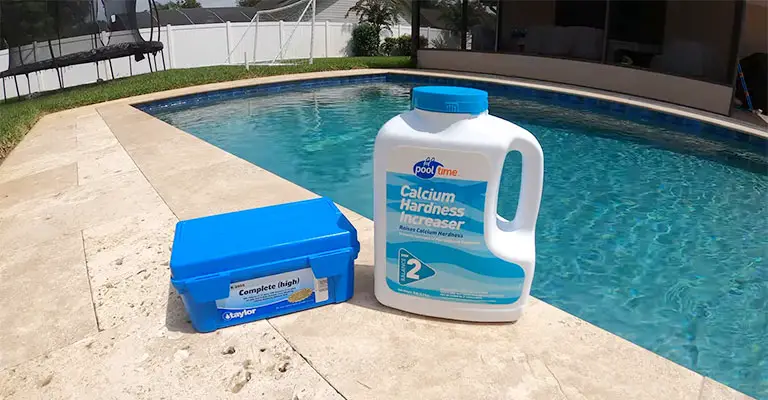
Calcium hardness in your swimming pool plays a similar role to pH levels and total alkalinity in preventing corrosion. It is ideal for calcium hardness to be between 150 and 400 parts per million.
Calcium or magnesium should be added back to the pool if the calcium hardness is less than that. If you want to increase the calcium hardness of your water, you can purchase a calcium hardness increaser in a swimming pool store or online.
The pool water can become cloudy if calcium hardness levels rise. It can also clog the flow of water in and out of the pool. Remove the hard water from your pool and replace it with fresh water to lower calcium hardness levels.
9. Adding Sanitizer
Sanitizer indeed has the effect of “shocking” the pool by completely destroying all the organic waste. After this process, the pool is completely cleansed of algae and bacteria.
You can purchase the shocking mixture at any local pool store or at stores like Home Depot or Lowe’s. A 24-pound bag of the mixture costs approximately $50. If the pump is not running, make sure it is before adding the shock.
Let the pump run for six hours after you pour the shock around the edge of the pool. Then, test the water to make sure it is sufficiently chlorinated. The level should be between one ppm and three ppm.
10. Add Clarifier
It’s time to add a clarifier to your pool once you’ve adjusted pH, total alkalinity, calcium hardness, and metals. As a pool is filled with water, tiny particles enter the pool. A clarifier removes these tiny particles.
Clarifiers can be found at most pool supply stores, Target, and online for between $5 and $20. Their function is to combine tiny particles found in a pool into one. The pool filter will remove these particles after 24 hours.
Be sure the filter system has had one full day to work before applying the sanitizer to the pool after the clarifier is applied.
Pool Just Filled, But Water Is Green: What’s Up?
Your first instinct is to think it’s algae when you see it for the first time. Generally, yes, but not always, especially when the pool is newly filled.
Most likely, you have a lot of metals in the water, so you have a green color in the newly filled pool. Copper or iron is likely to be the cause.
Where do we go from here? The metals in the water will oxidize if you shock it again, and the chemical reaction will give the water a green color. Now what?
You can get a metal remover like the CuLator if you need to remove those metals. Then you can put it in the skimmer basket if you have a pump.
Adding some form of metal sequestrant maybe your best option if you cannot remove the metal. They can be purchased online, and they prevent stains and any unwanted effects.
Treating the water with such metal control while filling the pool will achieve better results. The right extension of your hose can filter out metals, which is another option for filling your pool.
The pool water won’t need any metal treatments if you can already filter the metals out of it using this hose extension.
Add Algaecide
To ensure the pool can support chlorine, add algaecide after each shock treatment. After adding the algaecide, test your pH levels and use the recommended amount.
What Is The Recommended Frequency Of Pool Water Changes?
You should be able to keep your pool water for about five to seven years if you follow the above steps and perform daily, weekly, and monthly maintenance.
Likewise, if you don’t take the immediate necessary measures and treat your water, your water won’t last more than a few weeks.
Chemical Alternatives
We completely understand if you’re reluctant to put chemicals in the water. However, apart from the substances, there are a few other things that you can do that are just as beneficial.
If you convert your swimming pool to a saltwater pool, for example, your pool will be chemical-free.
In addition, you should install a pool filter to help remove gunk from the water, and then you should use a net daily to clean the water’s surface.
The key is to keep up with the maintenance. Chemicals won’t keep your water clean if you don’t take care of them. So, pool filters and nets are still needed.
What Is The Cure Time Of A Pool?
It takes an average of 28 days. After a few weeks, your concrete pool begins to harden and strengthen. You can measure how strong your concrete is by measuring the PSI.
What Is The Cause Of The Cloudy Water In My Pool?
A number of factors can cause cloudy pool water. There are several reasons for this: improper water balance, poor circulation, and calcium hardness.
The skimmer baskets and the pump strainer baskets should be cleaned to improve pool water circulation. Test each problem with the above-mentioned test kit to fix the incorrect water balance and calcium hardness.
Are Above-Ground Pools Maintained The Same Way As In-Ground Pools?
In general, yes. The chemical process and testing are the same for both above- and below-ground pools.
Nevertheless, based on the volume of water and the size of the pool, the amount of chemicals put into each differs greatly, so be sure to calculate each properly.
Is It Necessary To Drain My Pool At The End Of Each Season?
You do not have to drain the entire pool at the end of each season. However, you should drain part of the water to prepare your pool for winter.
To properly winterize your pool, you’ll also need a pool cover to keep debris out and a pump that’s maintained according to the manufacturer’s instructions.
Is It Possible To Swim In A Newly Filled Pool?
There’s no problem with a liner pool if the water is tap water. The water in freshly filled pools does not become contaminated overnight, and the pool will not be damaged either.
Final Words
First-time pool owners can be overwhelmed when getting their pool ready. However, by following the steps above, you will be sure to stay safe and happy while in the water with your family.
There are other alternatives you can use instead of chemicals, even though the idea of chemicals mixing with your water can be unfavorable.
For example, in order to keep your swimming water healthier and keep maintenance costs low, you can convert your pool into a saltwater pool.






